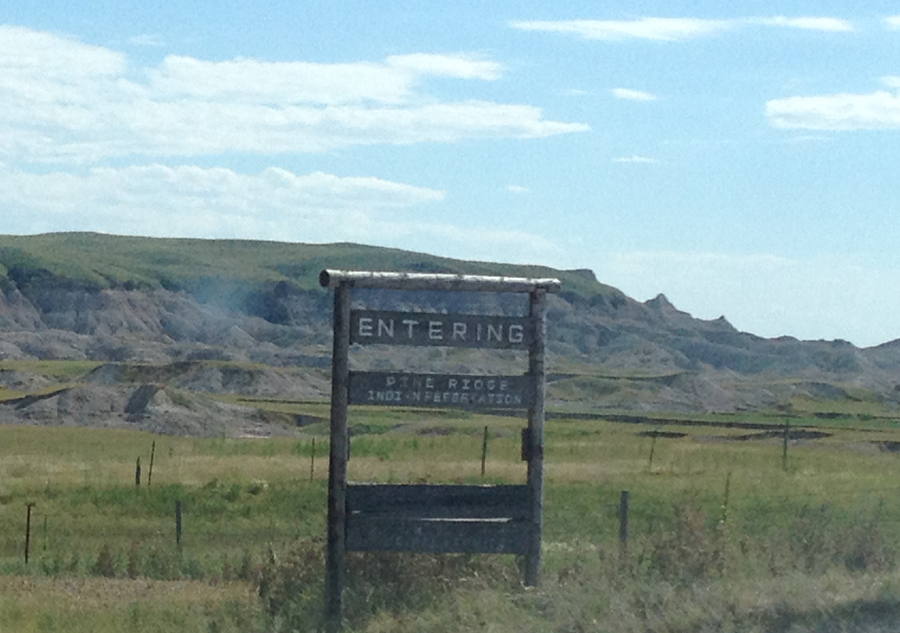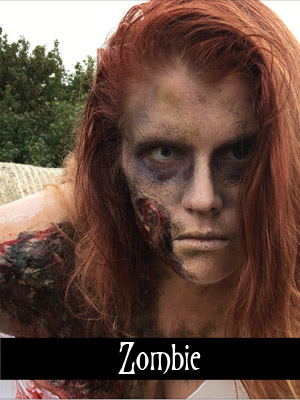Born and raised in South Dakota, this state is very dear to me. Although I was raised East River (East/West River is used to describe the two halves the state divided by the Missouri River, which is also the dividing line of Central and Mountain time zones) my heart belongs West River in the Black Hills and the Badlands. Every time I drive out there, my overactive mind calms and my soul is at peace.
In my first year after I graduated, I desperately needed this peace and jumped at the chance to take a job in Rapid City. During my year there, I did a lot of healing and learning about myself. I also, however, learned about the struggles of the Lakota Sioux tribe. Don’t get me wrong, I have lived in SD my whole life and had friends from the Reservation near Sisseton and I was familiar to some of the predicaments they faced. However, it wasn’t until I moved to Rapid City that I started to realize that I hadn’t even the first understanding of their problems.
Finding the Dream Center
While living in Rapid, I met a wonderful woman who works as a missionary for the Native Youth on Pine Ridge. Her stories brought me to tears in our first meeting, and even after I moved back to Sioux Falls, I continued to keep in touch. Her mission is the Dream Center on Pine Ridge, which is a 114 acre grounds in the Pine Ridge Indian Reservation that provides food, clothing, supplies and other needed items to the Native children. The Dream Center, run by a small staff and volunteers, will bus in children from the surrounding communities 4 days a week. It is at the Dream Center that these disadvantaged children can play, get a hot meal, be loved and cared for, and make sure they have at least one positive place where they can be kids and forget the worries they might face at home.
My employer offers a benefit where employees can do a service trip and receive a week of paid time while they are gone. Historically, people have gone to trips to the Dominican Republic, Haiti, Nicaragua, and Jamaica, but almost exclusively international trips. I had considered asking to take a trip out to Pine Ridge, and after the recent rash of suicides on the Pine Ridge Indian Reservation, my mind was made. I was given a week to go and serve at the dream center at the end of July.
The Problems facing the Native Youth
- Currently, it is estimated that there are 4000 homes needed on the reservation to combat the homelessness situation.
- Because of this, often more than 20 people live together in 2-4 bedroom homes or dilapidated trailers.
- The average income is $2,500. This is not a typo. It places a majority of the 75K Native Americans in SD far below the poverty line.
- These homes often lack basic comforts such as functioning toilets, running water, and heat during the winter.
- Because of this, many people freeze to death each winter.
- The suicide rate on the reservation is 5 times higher than the national average.
- The average life expectancy for Lakota men is just under 41 years old, while Lakota women average 46 years of age.
- In June of 2012, 160 children were taken into child protective services. Of these, 140 were not able to return home.
- Because of the laws on the reservation, background checks are not comprehensive, and children may be placed in foster homes that are far worse then where they started.
*Information from Dream Center Promotional materials and Wings As Eagles Ministries.
Seeing is Believing
The entrance of the Pine Ridge Indian Reservation. I took this through my windshield since the road I was on didn’t have any embankment to pull off on, and I couldn’t see far enough behind me on the winding road to safely stop and get out of the car.
These are just that statistics. The quantitative data, without the full picture for scope and breadth. It doesn’t even begin to cover the stories. It doesn’t make a dent in the list of problems.
The poverty and life expectancy puts Pine Ridge as the 2nd most impoverished and 2nd lowest life expectancy in the Western Hemisphere. They are second only to Haiti.
This is in my home state. In the United States. A South Dakota native, I did not know this stunning fact. I cannot imagine many people are aware of the severity of the poverty and suffering just a half a day’s drive from them.
I realize that there are starving children and families all over the nation. I volunteer at the banquet here in Sioux Falls a few times a year and see plenty of hungry faces getting the only hot meal they may see that day, so this certainly isn’t an issue localized to SD. But what I saw in the communities parallels images we see in ads to feed the hungry children in foreign countries all of the time. What about feeding the kids in South Dakota? Where are these ads?
On My Experience
Writing these posts in retrospect, it is so difficult for me not to go on tangents about how incredible the issues are that the Native American people are facing on Pine Ridge. I thought I was prepared for what I was going to encounter, and honestly, I only now feel like I have even the beginning of an understanding. In the next few weeks I will be sharing more on my experience, and in all honesty, I am still processing my thoughts.
Overall, this trip was really, really difficult for me. I immediately signed up for full time kitchen duty because this is where I felt I could make the most impact. This was something tangible. I was feeding hungry children. It was something within my ability to accomplish. Because facing the desperation, poverty, and suffering of these children was more than I could take. After day 2, I stayed in the kitchens from 6am to 7pm, not returning to the communities again until my last day. I was physically unable to give any more piggy back rides or even hardly hold myself upright, and mentally unable to see these children without wanting to cry.
A wall of the Sanctuary at the Dream Center. These are the hands of Native Children who still dream of a better life in the future.
By the end of the week, I feel like I am far more prepared to be there next year, but I can already see a change in how I view the Native population in SD. There is often so much talk about how these people are digging their own hole, but being out there, I realized that they are a people suffering from Post Traumatic Stress Disorder on a cultural scale. The Massacre at Wounded Knee, the re-homing and cultural assimilation of these people only happened 125 years ago. Our government failed them then, and through lack of state and federal resources, is continuing to fail them today. This problem is so much bigger than us, but with continued work, we can sew the seeds of hope in the Native Youth and give them hope to achieve their dreams and someday restore the Lakota people.






 Hi! I'm Alyce.
Hi! I'm Alyce. 




